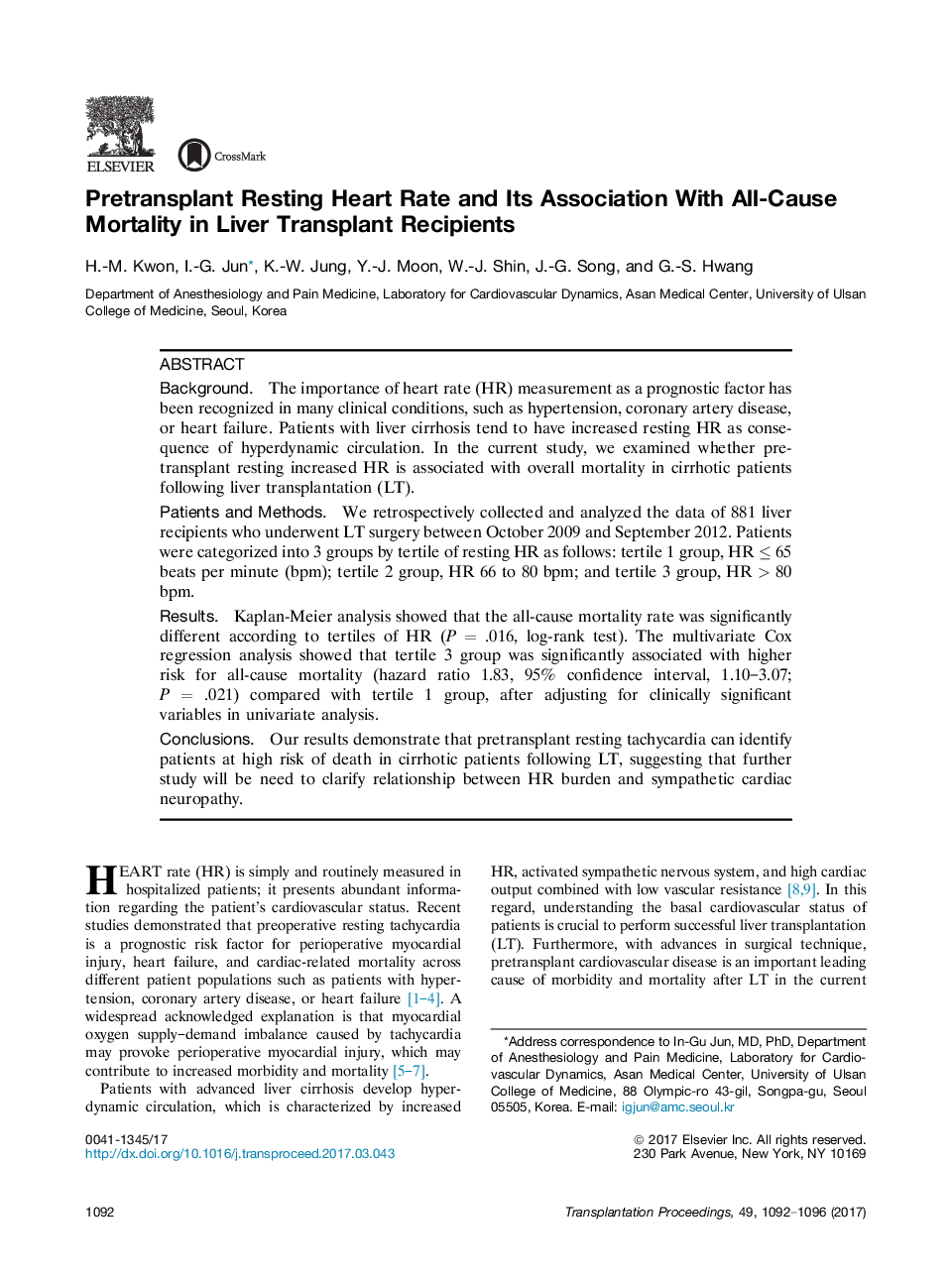| Article ID | Journal | Published Year | Pages | File Type |
|---|---|---|---|---|
| 5728806 | Transplantation Proceedings | 2017 | 5 Pages |
BackgroundThe importance of heart rate (HR) measurement as a prognostic factor has been recognized in many clinical conditions, such as hypertension, coronary artery disease, or heart failure. Patients with liver cirrhosis tend to have increased resting HR as consequence of hyperdynamic circulation. In the current study, we examined whether pretransplant resting increased HR is associated with overall mortality in cirrhotic patients following liver transplantation (LT).Patients and MethodsWe retrospectively collected and analyzed the data of 881 liver recipients who underwent LT surgery between October 2009 and September 2012. Patients were categorized into 3 groups by tertile of resting HR as follows: tertile 1 group, HR ⤠65 beats per minute (bpm); tertile 2 group, HR 66 to 80 bpm; and tertile 3 group, HR > 80 bpm.ResultsKaplan-Meier analysis showed that the all-cause mortality rate was significantly different according to tertiles of HR (P = .016, log-rank test). The multivariate Cox regression analysis showed that tertile 3 group was significantly associated with higher risk for all-cause mortality (hazard ratio 1.83, 95% confidence interval, 1.10-3.07; P = .021) compared with tertile 1 group, after adjusting for clinically significant variables in univariate analysis.ConclusionsOur results demonstrate that pretransplant resting tachycardia can identify patients at high risk of death in cirrhotic patients following LT, suggesting that further study will be need to clarify relationship between HR burden and sympathetic cardiac neuropathy.
